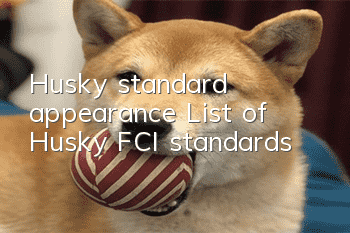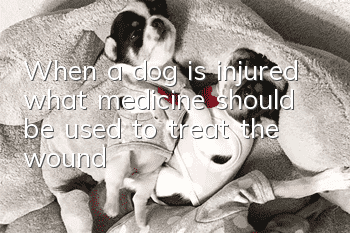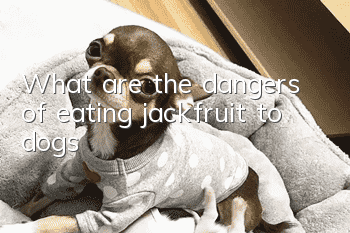Husky standard appearance List of Husky FCI standards

FCI Standard
Overall Appearance:
The Siberian Husky is a medium-sized working dog with brisk steps and graceful movements. This dog has a compact body structure, good coat, erect ears, and a brush-like tail, all of which show its northern flavor. Its gait is characterized by smoothness and ease. This dog performs its functions by wearing a rope and is able to transport light-weight items over long distances at moderate speeds. Its body proportions and shape reflect its balance of strength, speed and endurance. Male Siberian Huskies are more rigid but not rough; females are more flexible but not frail. Under the right conditions, with their muscles solid and well developed, the Siberian Husky will not be overweight.
Important proportions:
Viewed from the side, the length from the top of the withers to the top of the buttocks is slightly longer than the height from the ground to the top of the withers. The distance from the tip of the nose to the stop is equal to the distance from the stop to the occipital bone.
Behavior and temperament:
The characteristic temperament of the Siberian Husky is friendly and gentle, but also alert and enthusiastic. He does not have the main qualities of a guard dog, nor is he overly suspicious of strangers or aggressive towards other dogs. Adult dogs will appear somewhat reserved and noble. Its intelligence, docility, and enthusiasm make it a delightful companion dog and a hard-working working dog.
Skull: Medium size, in proportion to the body; slightly rounded at the top, tapering from the widest point toward the eyes.
Stop: clear outline.
Nose: Gray with black, brown or black; copper with dark auburn; pure white dogs may be flesh-colored. A "snow nose" with pink stripes is also available.
Muzzle: Medium length and width, tapering gently toward the nose, neither pointed nor square at the top. The bridge of the nose is straight from stop to top.
Lips: The coloring is natural and tight.
Teeth/jaws: Closed, scissor bite.
Eyes: Almond-shaped, moderately spaced and slightly slanted. The color is brown or blue; one of each (color) or mixed colors are also acceptable.
Expression: kind, friendly, curious, even a little naughty.
Ears: Medium size, triangular, set high on the head and well placed. The ears are thick but well-coated. The back of the ears is slightly arched, firm and erect. The tips of the ears are slightly rounded and point straight upward.
Neck: Medium length, arched and carried proudly when standing. When trotting, the neck is stretched forward, and the head is therefore lifted slightly forward.
Body:
Back: Straight and strong, level with withers to top line of croup. The length is moderate, neither too loose nor too short in depth.
Waist: Tight, sloping, narrower than the ribcage, slightly folded upward.
Hips: Sloping at an angle from the spine, but not so steep as to interfere with the hind legsForward.
Chest: Deep and strong, but not very broad, with its deepest point just behind and level with the elbows. The ribs are well sprung from the spine but are flat on the sides, allowing freedom of movement.
Tail: Fox-shaped tail, well-coated, just below the height of the topline. When the dog is concentrating, it is usually raised over the back and bent into a sickle shape. When lifted, the tail does not curl to either side of the body or fold down against the back. Dragging the tail when resting is normal. The tail hairs are of medium length, with the top, sides and lower parts roughly equal in length, and look like a round brush.
Forequarters: Viewed from the front when standing, the legs should be well spaced, parallel, and straight. Good bone but not heavy. The length of the leg from the elbow to the ground is slightly longer than the distance from the elbow to the top of the withers. The dewclaws on the front feet should be removed. The shoulder blades naturally tilt back. The upper arm is slightly tilted from the shoulder to the elbow, not perpendicular to the ground. The muscles and ligaments are well developed and firmly connect the shoulders to the ribcage. The elbows should be close to the body, neither turned outward nor inward. Pastern joints need to be strong but flexible. Viewed from the side, the pasterns are slightly slanted.
Hindquarters: Viewed from behind when standing, the hind legs are properly spaced and parallel. Dewclaws must be removed. The upper thigh muscles are well developed and strong. The back knee joint should be bent naturally. The hocks are well defined and close to the ground.
Feet: Oval but not long. Claws are medium in size, compact and well haired between toes and pads. The pads are thick and thick, and do not turn in or out when the dog is standing naturally.
Gait/movement:
The typical gait of the Siberian Husky is smooth and relaxed. It is light on its feet and will trot at a moderate pace when shown, thereby demonstrating the natural reach of its forequarters and the powerful drive of its hindquarters. When walking, looking from the front to the back, you can see that it is not walking in a single line, but as the speed gradually increases, the legs will gradually step inward, and eventually the foot pads will step on a straight line below the center of the body in the depth direction. Like the pads of the feet, the front and rear legs are raised forward, and the elbows and stifles do not turn in or out. Each hind leg moves in the same line as the front leg on the same side. When the dog walks, its topline is firm and even.
Coat characteristics:
The coat of the Siberian Husky is two-layered, of moderate length, and has a good appearance, but it will not be too long to affect the appearance of the dog. The undercoat is soft, dense and of sufficient length to support the upper coat. The protective outer coat is straight and smooth, neither rough nor bristling. One point to note is that it is normal to lose the undercoat during the shedding season. To give it a neat appearance, clean its beard and the soft hair between its toes and around its feet. Cleaning other parts of the coat is not allowed, otherwise you will be severely punished.
Color: Any color from black to pure white is available. There are often different colored markings on the head, including many eye-catching stripes not found in other dog breeds.
Dimensions and weight:
Height to withers:
Male: 21-235 inches (535-60 cm)
Female: 20-22 inches (505-56 cm)
Weight:
Male; 45-60 lbs (205-28 kg)
Female: 35-50 lbs (155-23 kg)
Weight and height are in proportion. The above measurements are the maximum height and maximum weight. If the bone (height) or weight exceeds, penalty points will be assessed.
Summary:
The most important characteristics of the Siberian Husky are medium size, appropriate bone mass, well-proportioned body shape, free and brisk movements, unique coat, pleasant appearance of the head and ears, straight tail, and graceful posture. . If the bone mass or weight exceeds the limit, the gait is clumsy or timid, or the coat is long or thick, you will be penalized. As a transport dog, the Siberian Husky does not appear to be heavy or rough, nor does it appear weak as a short-distance racing dog. Both male and female Siberian Huskies appear to show great endurance. In addition to the defects already mentioned, the Siberian Husky must be free from structural defects common in other breeds, although not specifically mentioned here.
Defects: Any deviation from the above points is considered a defect, the degree of which is strictly proportional to its grade.
Skull: Clumsy or heavy, too obvious in outline
Stop: Inadequate
Muzzle: Too long or too rough; too short or too long
Teeth/jaws: other bites except scissor bite
Eye: The position is slanted; the position is too close
Neck: too short or too thick; too long
Back: weak or sloping backward; arched; sloping topline
Chest: too wide, barrel-shaped chest; ribs too flat or weak
Tail: Tightly curled; feathery; too high or too low
Shoulders: straight; loose
Forequarters: weak pasterns, too heavy bones; too narrow or too wide front; cubital valgus
Feet: soft or splayed toes; claws too large or cumbersome; claws too small and weak; toes turned in or out
Gait/movement: short, striding, bumpy, awkward or swaying; crossed or sideways
Hair: Long, thick, fluffy; texture is too coarse or too fine; repairs are not allowed.
Removal of defects:
Dogs over 23.5 inches (60 cm) for males and dogs over 22 inches (56 cm) for females.
- Is it normal for dogs to vomit before giving birth?
- How about go seven kinds of meat dog food? Just look at the nutrients in it.
- Can dogs be couriered? Courier companies cannot be responsible for the transportation of live animals!
- What should I do if my dog has mites? 2 moves to kill and 1 move to prevent!
- What can dog vaccines prevent? You will gain more knowledge after reading this article!
- Belvedere dog fleas removal, don’t worry about ticks!
- How long should it take to give your dog water after eating dog food?
- Your dog is very thirsty after eating dog food. Should you change his food?
- Can dogs eat grapefruit peels? What are the dangers of grapefruit peels to dogs?
- What are the signs of a dog pooping? Can you predict the state of a dog pooping?



